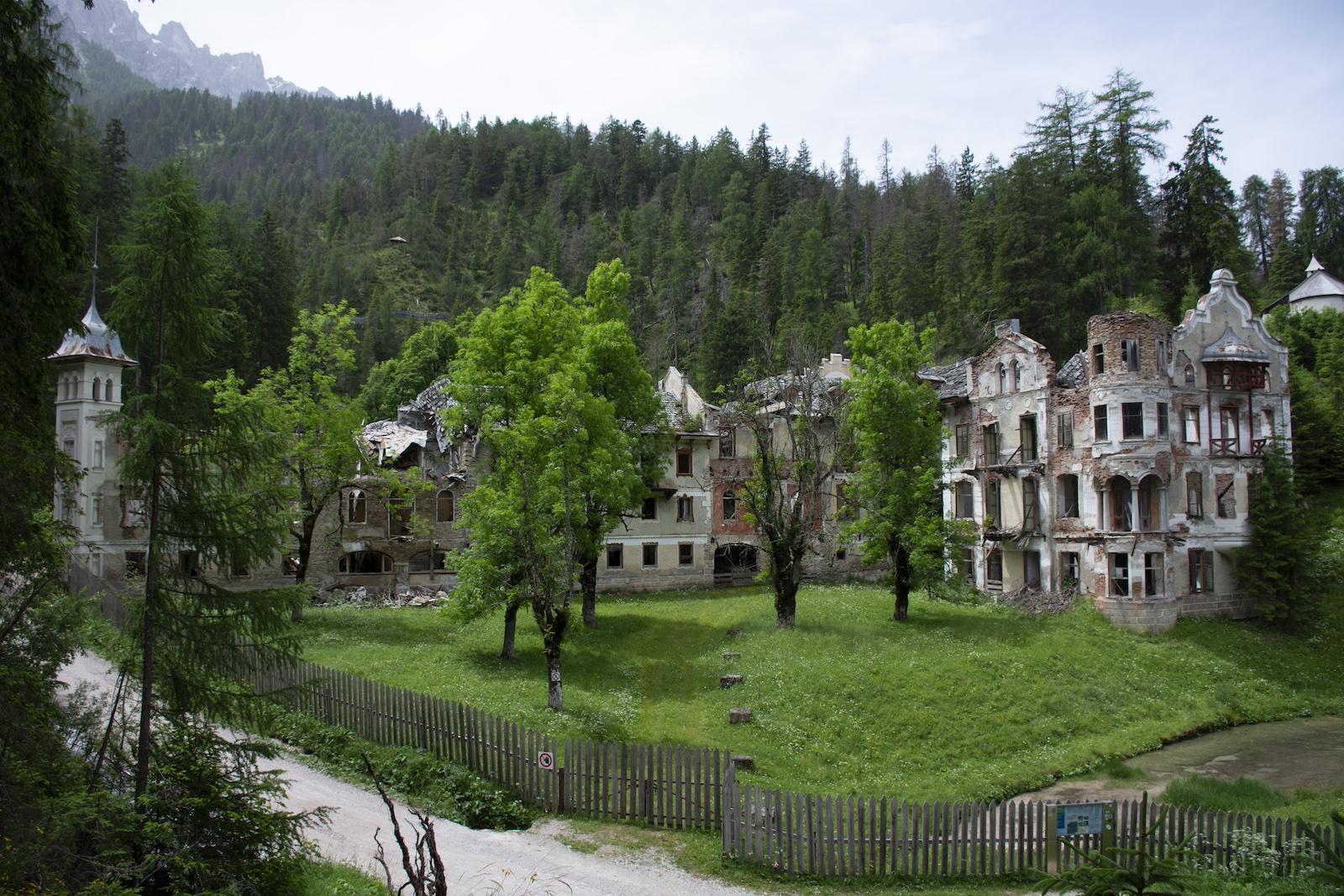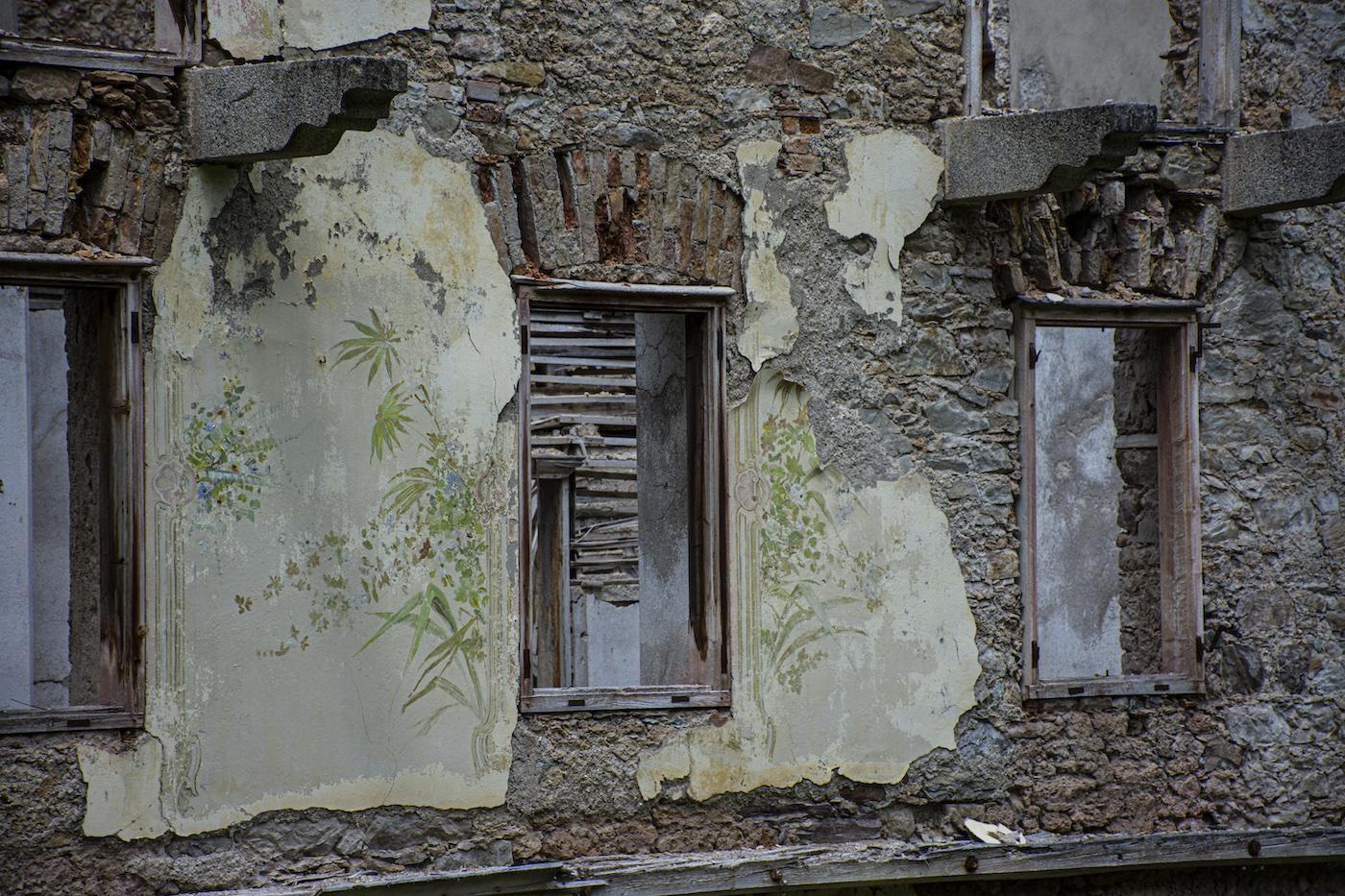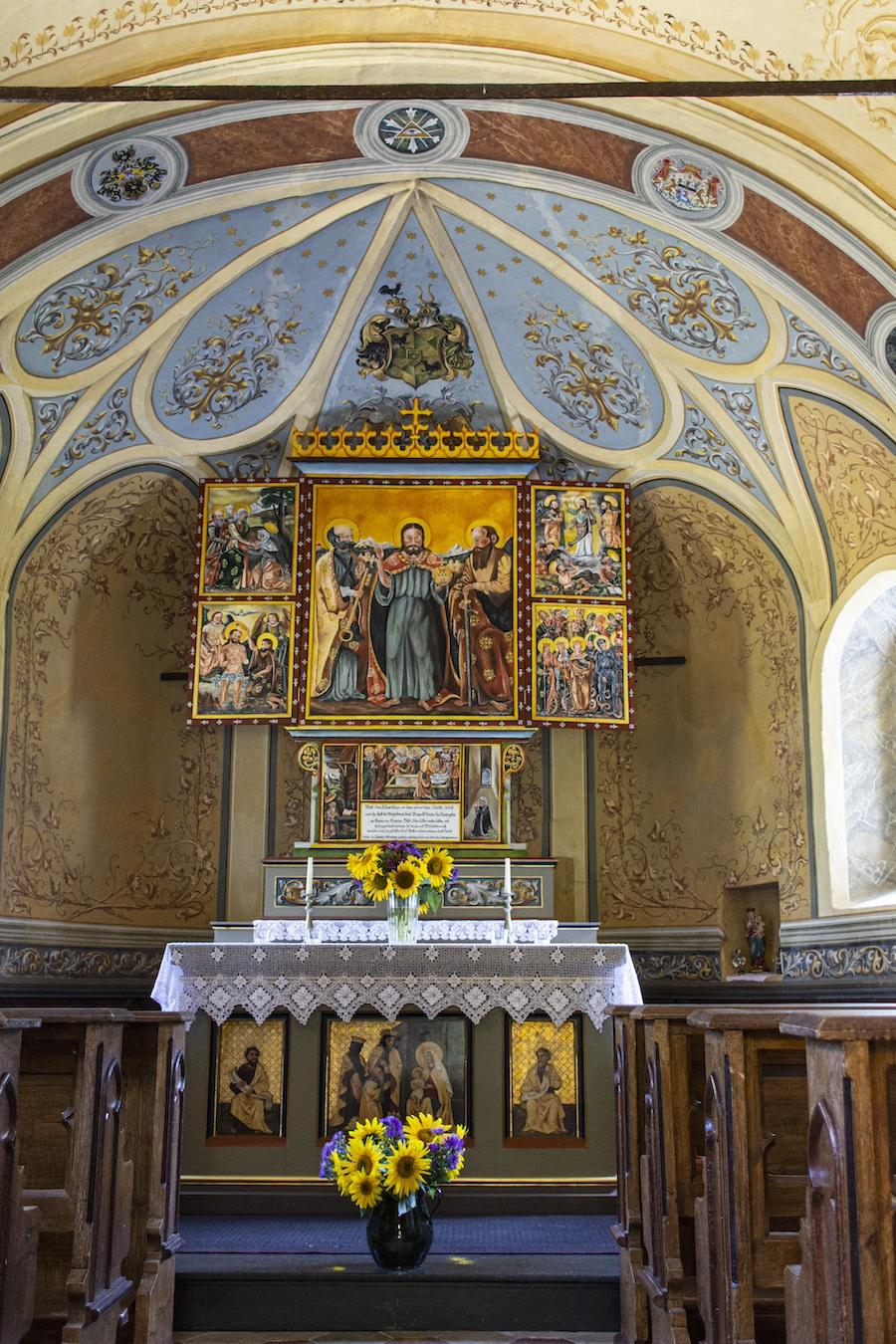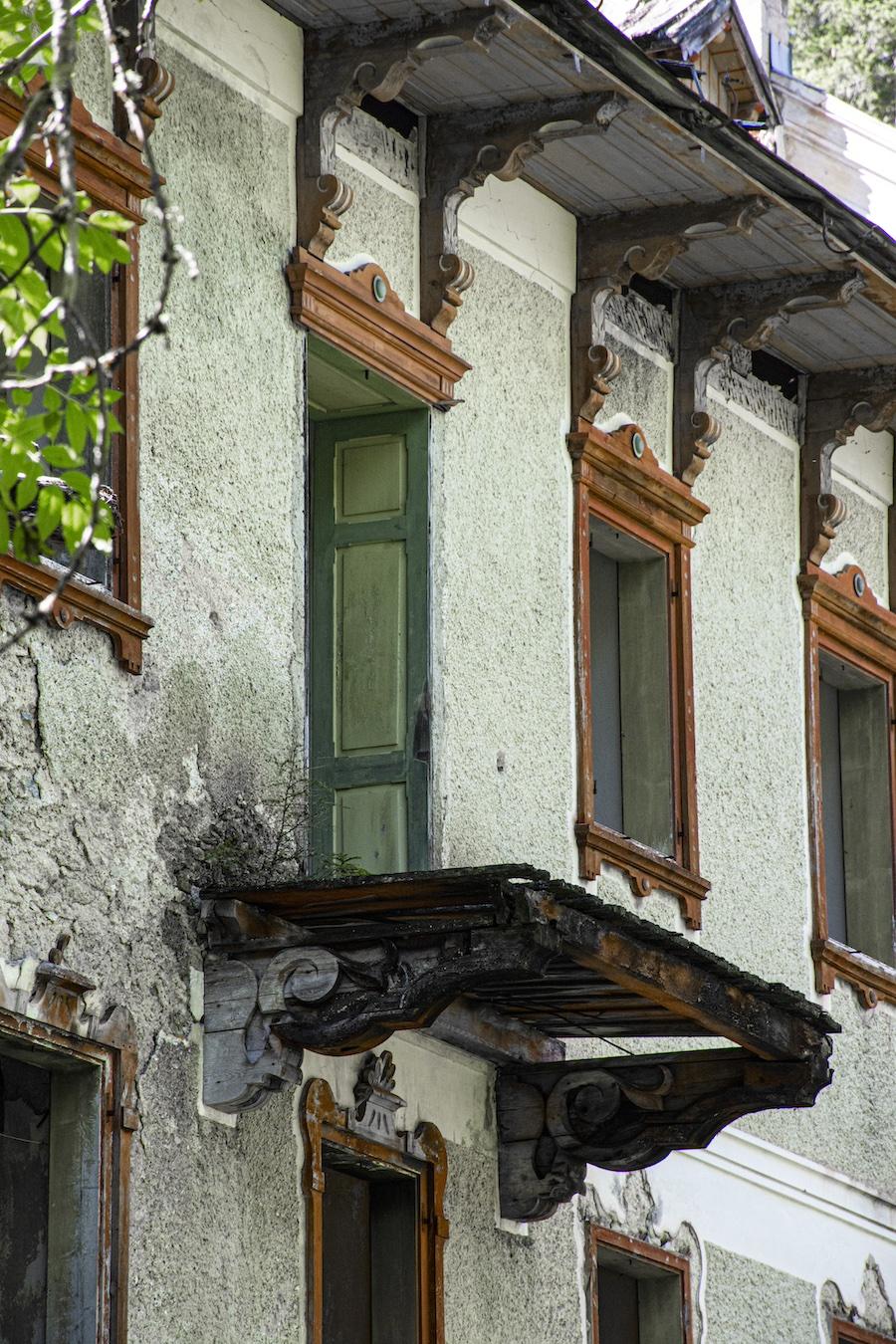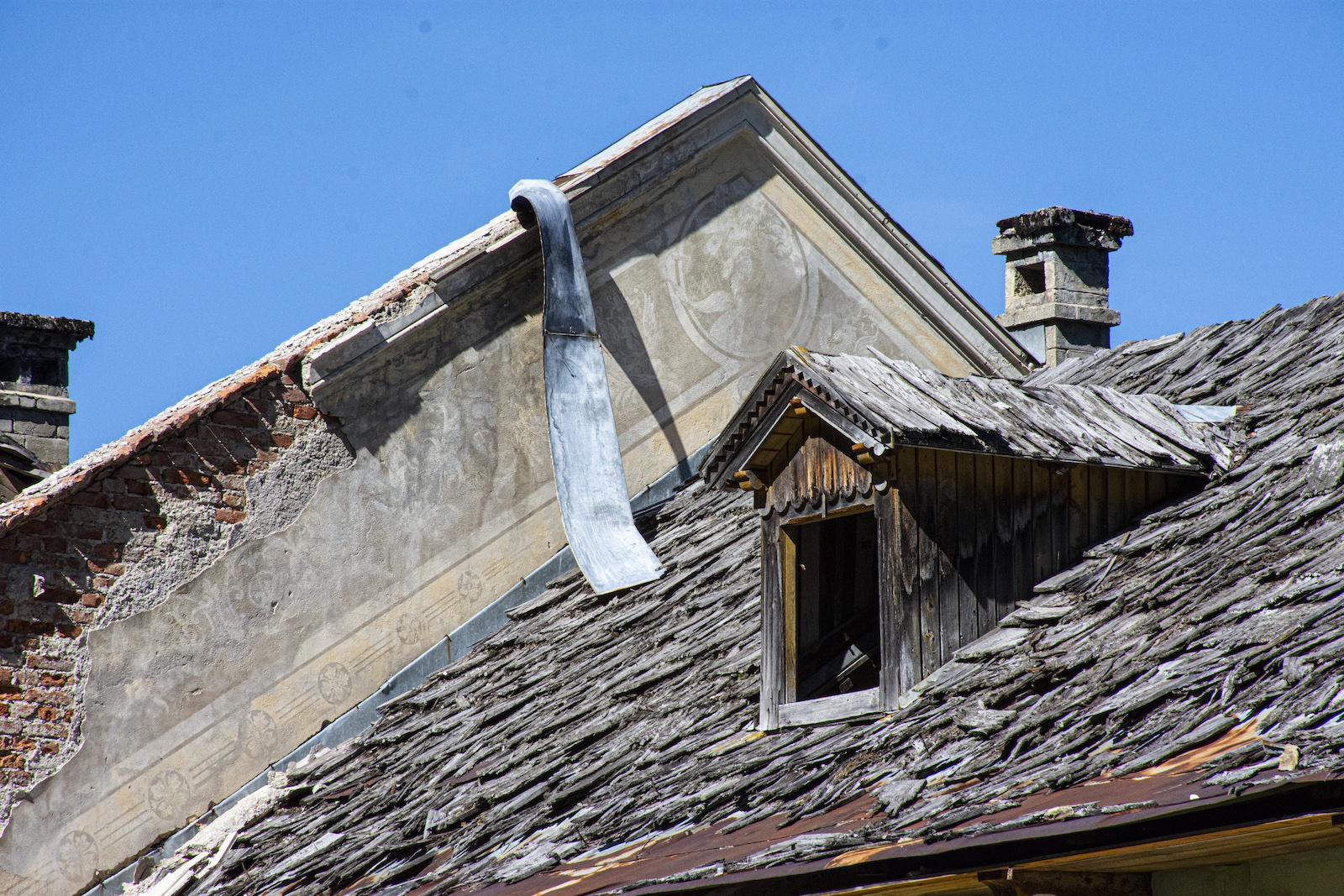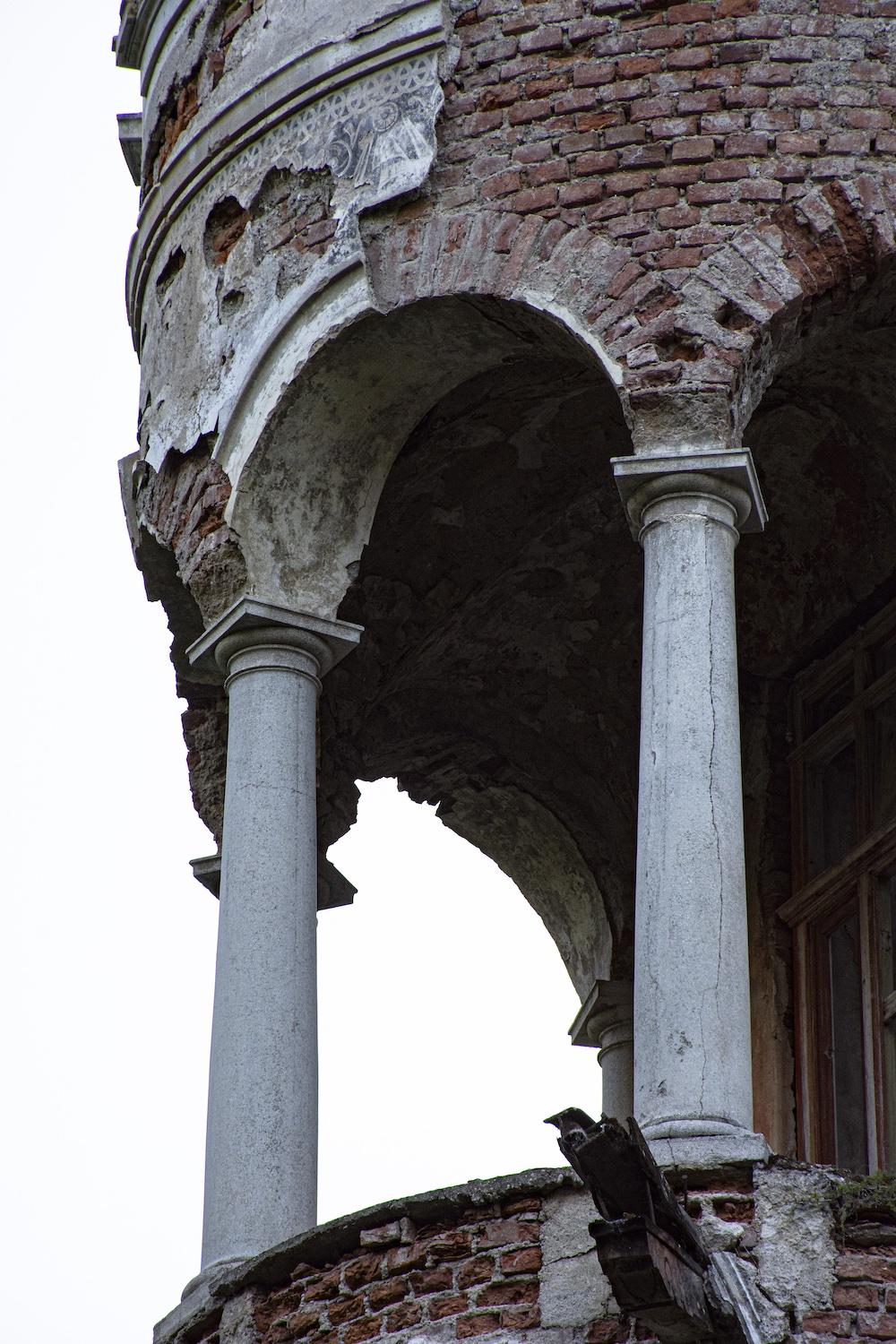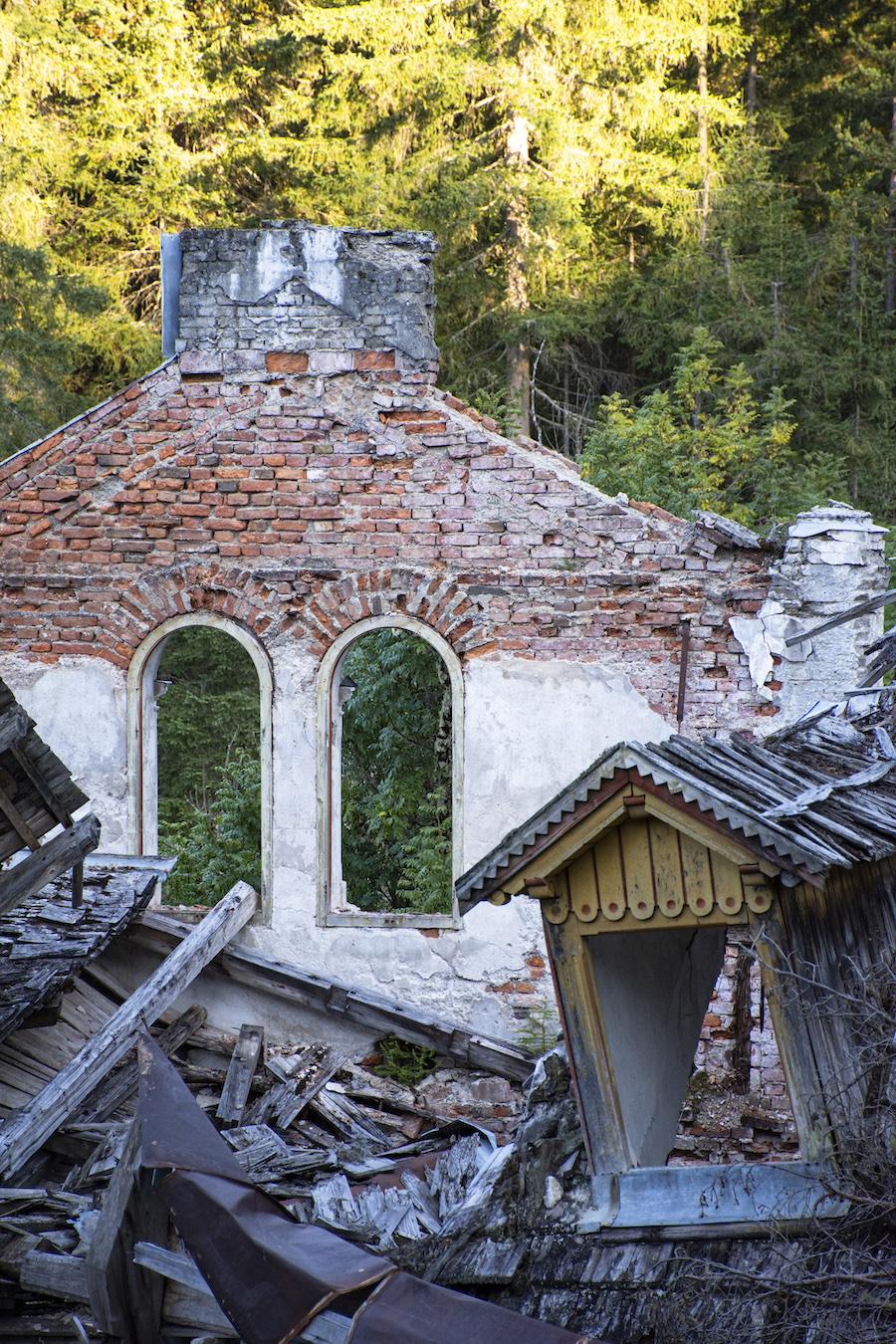The first evidence of a structure at the site dates back to the 16th century, as a “rustic bath” is noted as being in that area. At the end of the same century, in 1594, a small chapel located nearby was consecrated. This chapel has retained much of its decoration and remains in significantly better shape than the baths, as it is filled with colorful, recently restored frescos.
It is likely that the chapel was built atop an older place of worship, such as the remains of a pre-Christian shrine related to the cult of waters. Continuous use of the site was also likely, since even the altar within pre-dates the 16th century structure. The chapel was also connected to a hermitage until 1786.
In 1854, a doctor, Johann Scheiber, decided to buy the property with the purpose of creating a sanatorium for everyone who needed it, regardless of wealth. His project was centered around the use of the water, as the area boasts five different natural springs (Lavaredo, Imperatore, Sulfurea, Fiera and Candida).




